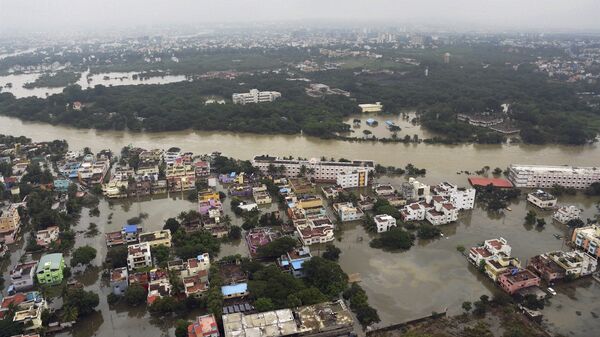India's north-eastern region has been alerted following a landslide at the Milin sector of the Yarlung Tsangpo in Tibet. China informed India's water authority on Tuesday about the landslide which occurred on Tsangpo, which assumes the name of Siang when it flows into Arunachal Pradesh.
READ MORE: China Agrees to Resume Sharing Crucial Hydrological Data With India
Arunachal Pradesh's secretary of disaster management informed the media that due to the landslide at the Yarlung Tsangpo in China on October 29, there is a possibility of occurrence of a flash flood on Siang.
Due to landslide dam at #Milin section of #Yarlung #Zangpo/ #Siang, water level at #Tuting, #Arunachal Pradesh falling at rate of 1cm/ hr at 10 hrs 30.10.2018…hydrograph appended. pic.twitter.com/c3XYfBjBOo
— Central Water Commission Official Flood Forecast (@CWCOfficial_FF) October 30, 2018
Another landslide on the Siang. Water levels at Tuting have dropped off again.
— Ninong Ering (@ninong_erring) October 30, 2018
More information is sought from disaster management @ndmaindia @CWCOfficial_GoI
Attached is picture at Tuting, circular by DC and drying up river Siang. pic.twitter.com/CXAuJlArpR
"People are advised to refrain from venturing out in the river for fishing, swimming etc till the situation becomes normal. Further, all concerned are requested to keep strict vigil and not to panic or create panic on the issue," Duly Kamduk, Upper Siang district magistrate said in a circular.
Meanwhile, locals fear that China is creating artificial problems in the river that destroyed crops and household properties in three districts of Arunachal Pradesh besides triggering an ecological catastrophe in the region.
READ MORE: Wary of Chinese Intentions: India to Build Reservoirs to Store Brahmaputra Water
Member of the Indian Parliament representing Arunachal East, Ninong Ering has asked the Ministry of External Affairs to investigate the change in the color of Siang and to take up the matter at the diplomatic level with China.
While India claims Arunachal Pradesh as part of the federation, China recognizes it as South Tibet.



